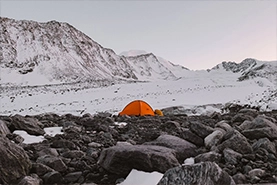Nepal stands as a mecca for wilderness trekking enthusiasts, offering some of the world’s most spectacular mountain landscapes and diverse cultural experiences. While the Everest Base Camp and Annapurna Circuit treks often capture the spotlight, discerning adventurers are increasingly turning to less-frequented routes that deliver equally breathtaking experiences without the crowds. Two such remarkable journeys are the Manaslu Circuit Short Trek and the Ganesh Himal Singla Pass Trek—both offering pristine wilderness experiences in the heart of the Himalayan range.
The Allure of Wilderness Trekking in Nepal
Nepal’s wilderness trekking routes offer an authentic experience that combines physical challenge with cultural immersion. These remote trails wind through untouched forests, across alpine meadows, and over high mountain passes, providing trekkers with panoramic views of snow-capped peaks and glimpses into traditional village life that has remained unchanged for centuries.
What makes wilderness trekking in Nepal particularly special is the profound sense of isolation and connection with nature. Unlike the more commercialized routes, these paths allow travelers to experience the true essence of the Himalayas—raw, majestic, and spiritually uplifting. The journey becomes not just a physical adventure but a soul-stirring experience that leaves an indelible mark on every trekker.
Manaslu Circuit Short Trek: The Abbreviated Masterpiece
The Manaslu Circuit traditionally requires 14-16 days to complete, but the Short Trek variation, typically completed in 10-12 days, offers a condensed yet equally rewarding experience for those with limited time.
Geography and Terrain
Circling the world’s eighth highest mountain, Mount Manaslu (8,163m), this trek traverses diverse ecological zones ranging from subtropical forests at lower elevations to alpine terrain near Larkya La Pass (5,160m). The route follows the ancient salt-trading path along the Budhi Gandaki River, gradually ascending through the stunning Manaslu Conservation Area.
The short trek version maintains the circuit’s highlights while optimizing certain sections. Trekkers typically begin in Soti Khola or Machha Khola (depending on road conditions) and end in Dharapani, from where they can connect to the Annapurna Circuit or return to Kathmandu.
Cultural Immersion
What distinguishes the Manaslu region is its rich cultural tapestry. The lower portions feature predominantly Hindu settlements, while the upper reaches showcase strong Tibetan Buddhist influences. The villages of Samagaon and Samdo stand as cultural gems where ancient traditions thrive amid dramatic mountain backdrops.
Monasteries dot the landscape, with Ribung Gompa in Lho and Mu Gompa near Samagaon serving as spiritual anchors for local communities. Trekkers can witness traditional ceremonies, prayer flags fluttering in the mountain breeze, and mani walls inscribed with Buddhist mantras.
Highlights and Challenges
The undisputed pinnacle of the Manaslu Circuit Short Trek is crossing the Larkya La Pass, offering breathtaking views of Himlung Himal, Cheo Himal, and Annapurna II. The descent from the pass into the verdant Marsyangdi Valley presents a dramatic transition in landscape and climate.
While shorter than the full circuit, this trek still demands proper acclimatization and reasonable fitness. The trail includes several challenging sections with steep ascents and descents, particularly approaching the pass. However, the shortened itinerary is carefully designed to maintain adequate acclimatization days while eliminating some of the less essential portions of the full circuit.
Ganesh Himal Singla Pass Trek: The Hidden Gem
Named after the elephant-headed Hindu deity Ganesh, the Ganesh Himal range harbors one of Nepal’s most underexplored trekking regions. The Singla Pass Trek through this spectacular range offers wilderness in its purest form—untouched, uncrowded, and unbelievably beautiful.
The Untouched Wilderness
Unlike the more developed trekking routes, the Ganesh Himal region offers a genuine wilderness experience. The trails here wind through pristine forests of rhododendron, oak, and pine, alive with diverse wildlife including the elusive red panda. Crystal-clear mountain streams carve their way through the landscape, while waterfalls cascade down steep mountainsides.
The biodiversity encountered along this trek is extraordinary, with over 526 species of plants, 300 species of birds, and numerous mammals calling this region home. For nature enthusiasts and wildlife photographers, this trek represents a rare opportunity to experience the Himalayan ecosystem in its most undisturbed state.
The Challenge of Singla Pass
The trek’s crowning achievement is conquering the Singla Pass (4,120m), a challenging high-altitude crossing that rewards trekkers with sweeping views of the Ganesh Himal range, including Ganesh Himal I (7,429m), as well as distant perspectives of Langtang Lirung and Manaslu.
The pass crossing requires proper preparation and acclimatization but remains accessible to reasonably fit trekkers with determination. What makes this crossing special is its relative obscurity—few foreign trekkers have stood atop Singla Pass, making the achievement particularly meaningful.
Cultural Tapestry
The Ganesh Himal region is primarily inhabited by Tamang and Gurung communities, both known for their warm hospitality and rich cultural traditions. The trails pass through isolated villages where traditional agriculture and animal husbandry remain the primary livelihoods.
Visiting during local festivals offers an extraordinary glimpse into authentic rural Nepali life. Tamang Selo music, traditional dance performances, and local culinary traditions provide a cultural dimension that perfectly complements the natural splendor of the region.
Practical Considerations for Wilderness Trekking
Both the Manaslu Circuit Short Trek and Ganesh Himal Singla Pass Trek require special permits, which must be arranged through registered trekking agencies in Nepal. For Manaslu, trekkers need the Manaslu Restricted Area Permit along with the Annapurna Conservation Area Permit, while Ganesh Himal requires the Ganesh Himal Special Trekking Permit.
The optimal seasons for both treks are spring (March to May) and autumn (September to November), when the weather is most stable, offering clear mountain views and comfortable trekking conditions. Winter treks are possible but challenging due to snow at higher elevations, while summer brings monsoon rains and leeches at lower altitudes.
Tea houses and lodges are available along the Manaslu Circuit, though accommodations become more basic as the trail ascends. The Ganesh Himal trek, being less developed, often requires camping arrangements with the support of porters and guides, particularly in its more remote sections.
Conclusion: The Transformative Power of Wilderness Trekking
The Manaslu Circuit Short Trek and Ganesh Himal Singla Pass Trek represent Nepal’s wilderness trekking at its finest—offering adventures that transcend ordinary travel experiences. These journeys challenge trekkers physically and mentally while rewarding them with incomparable natural beauty and cultural insights impossible to gain through conventional tourism.
As Nepal’s more famous trekking routes grow increasingly crowded, these less-traveled paths provide the solitude and authenticity that many adventurers seek. The profound silence of high mountain passes, the genuine smiles of villagers rarely visited by foreigners, and the sense of accomplishment from completing challenging trails create memories that last a lifetime.
For those willing to step beyond the familiar and embrace the untamed heart of the Himalayas, these wilderness treks offer not just an adventure but a transformative journey. In the sacred spaces of Nepal’s remote mountains, among communities that have preserved their traditions for generations, trekkers often discover not just the majesty of nature but deeper truths about themselves and their place in the world.










